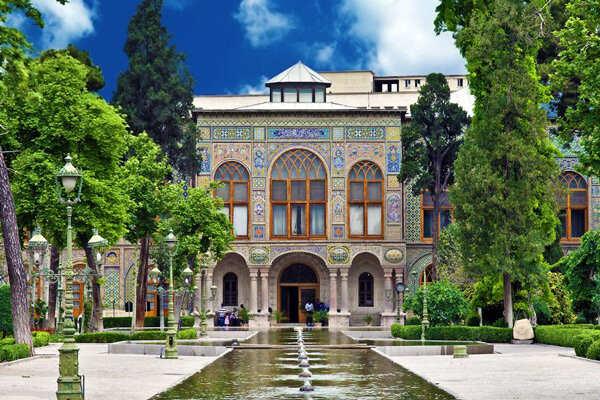Tehran exhibit unveils hidden treasures of 19th-century photography

The exhibit, a collaboration between the Research Institute of Cultural Heritage, and the UNESCO-designated Golestan Palace, will be running through January 18th at the Golestan Palace’s photography atelier.
Organizers of the exhibition aim to shed light on a new perspective of historical glass plate photography, marking the foundational moments of photography in Iran.
To mark the inauguration, a specialized session was held where Mohammadreza Tahmasbpour, a researcher, writer, and photographer, introduced the research potential present within the albums of the Golestan Palace and proposed strategies for easier access to the artworks and available information within this collection.
Another speaker, Sahar Nouhi, presented a detailed examination of historical retouching in glass plate negative photography during the Qajar era. Nouhi clarified the techniques and materials employed in historical retouching, counting the reasons behind these modifications.
The exhibition showcases the results of Sahar Nouhi’s research on historical retouching in Qajar-era glass plate negative photography preserved in Golestan Palace.
Nouhi highlighted, “Historical retouching in glass plate negative photography contributes significantly to the historical and artistic identity of these valuable artworks.
“Unfortunately, due to a lack of awareness about their existence, as well as the materials and techniques used, they are highly vulnerable to damage.”
According to organizers, the exhibition stands as a testament to the dedication of researchers and experts to unveil the concealed brilliance of historical photography techniques, offering a rare glimpse into the artistry and technical mastery of 19th-century photographers.
The palace complex once served as the official residence of Qajar monarchs who ruled Persia (Iran) between 1789 and 1925. It exemplifies the architectural and artistic achievements of the Qajar epoch, as well as the introduction of European motifs and styles into Persian art.
Experts say it displays a remarkable mixture of ancient Persian and contemporary European architectural styles, which characterized much of Iranian art in the 19th and 20th centuries.
Golestan Palace embodies a successful integration of earlier Persian crafts and architecture with Western influences. Over the past two centuries, it has become a center of arts and architecture, a source of inspiration for Iranian artists and architects to this day.
Currently, the complex consists of eight key palace structures mostly used as museums and the eponymous gardens, a green shared center of the complex, surrounded by an outer wall with gates.
AFM
